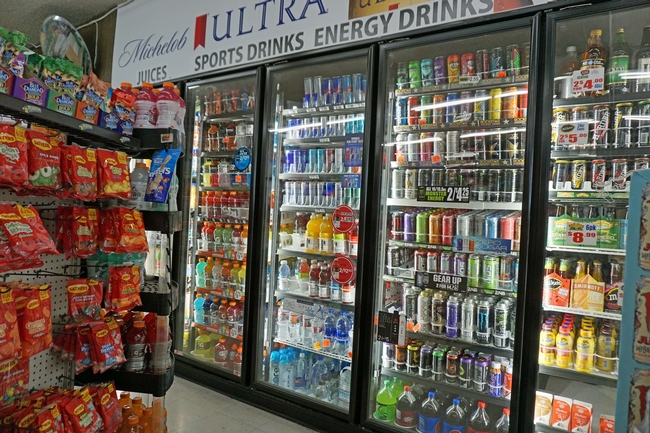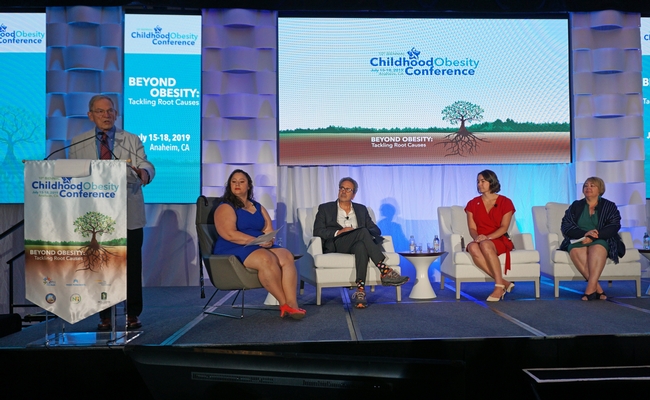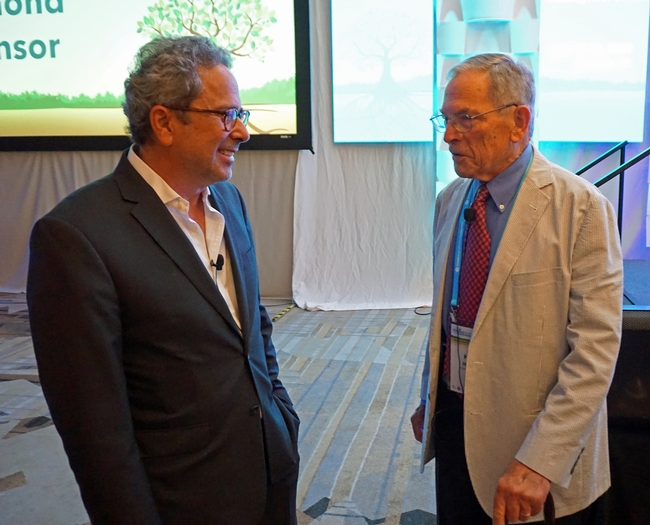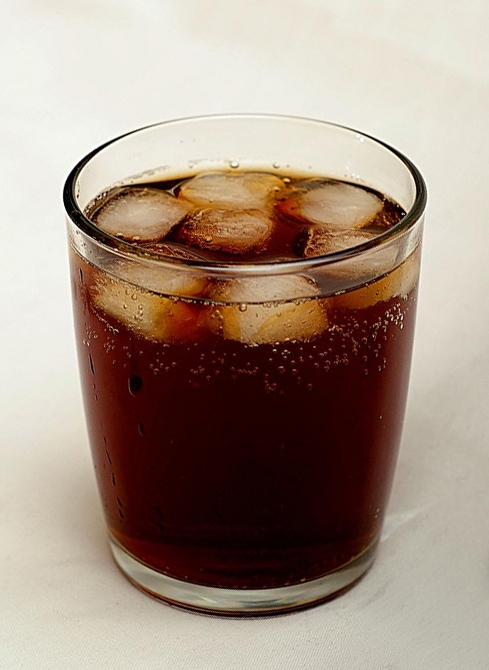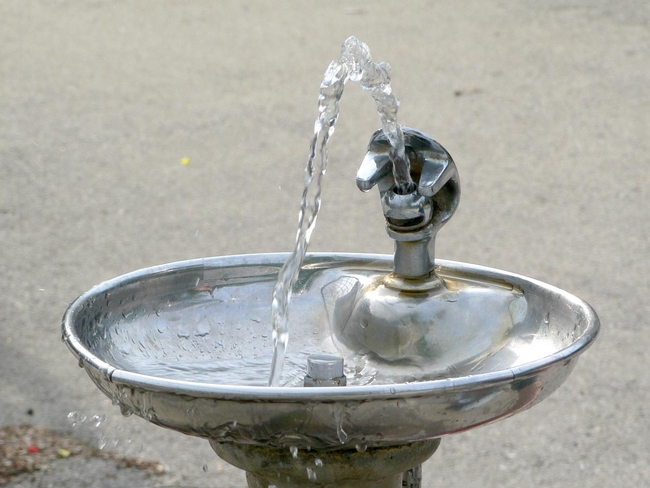Posts Tagged: sugar-sweetened beverage
Soda tax advocates ride a political roller-coaster
When Genoveva Islas was 12 years old, she was responsible for giving insulin injections to her diabetic tia, her aunt.
“Tia lost her toes, lost her leg, lost her life,” Islas said. “This is a very important fight.”
Islas is director of Cultiva La Salud in Fresno, which works to address poor nutrition and physical inactivity in the San Joaquin Valley. The fight Islas referred to is the “soda wars,” a battle to reduce the amount of sugar-sweetened beverages (SSBs) consumed by Americans. SSBs are the single most significant source of sugar in Americans' diets, amounting to nearly half of sugar intake. They have been unequivocally linked to increases in obesity, diabetes, heart disease, liver disease, tooth decay and some cancers.
Islas talked about the tragic fate of her tia at the July 2019 California Obesity Conference in Anaheim, where 1,025 public health, nutrition, science and political leaders convened to share strategies for overcoming the childhood obesity crisis in the United States. She was part of a panel on taxing sugary drinks to reduce SSB consumption and fund community health programs.
“I'm here because I believe health is a right, not a luxury,” Islas said. “A soda tax is a fight for the community I love.”
Soda tax detractors argue that the strategy is regressive, in that it takes a larger percent of income from low-income earners than from high-income earners.
“I say regressive is the incidence of diabetes in my community, the incidence of heart disease in my community,” Islas said. “The California Central Valley has the highest rates of drinking water violations. Bottled water is costly. People are choosing sugar-sweetened beverages when it is the most affordable choice for them.”
Money raised by the soda tax, Islas continued, could support water quality improvements and encourage the public to drink free and safe tap water.
California Assemblymember Richard Bloom (D-Santa Monica), who has proposed soda tax legislation several times, was also on the soda tax panel.
“The soda industry has poured a huge amount of money toward lobbying in Sacramento against soda restriction laws,” he said.
Bloom suggested that soda tax proponents be clear about the implications of childhood obesity and associated diseases when working to implement soda tax laws.
“Words like ‘epidemic' and ‘crisis' are used so much, they start to lose their meaning,” Bloom said. “We have a lot of statistics on the science of sugary drinks, but we don't talk about the misery this visits upon people and families and communities – amputations, heart disease, cancer. We need to start telling those stories viscerally.”
Kenneth Hecht, director of policy at UC's Nutrition Policy Institute, moderated the panel discussion. He said that a soda tax is the most cost-effective intervention to reduce soda consumption. It has been implemented and studied in Berkeley, Calif., where voters in 2014 passed a local initiative to tax soda and other sugar-sweetened beverages 2 cents per ounce. Three years later, residents reported drinking 52 percent fewer servings of sugary drinks than they did before the tax was imposed.
“Soda taxes work,” said Kristine Madsen, director of the Berkeley Food Institute and professor at UC Berkeley School of Public Health, who evaluated the Berkeley soda tax and also spoke at the conference.
The bulk of Berkeley's soda tax revenue is dedicated to supporting nutrition education and gardening programs in schools and allocated to local organizations working to encourage healthier behaviors in Berkeley.
San Francisco, Oakland and Albany also passed soda taxes. Other communities were planning to put soda tax initiatives on the ballot, but were stymied by a preemptive strike waged by the soda industry. In June 2018, the California Legislature passed a bill to preempt any new local beverage or food taxes until 2031. According to Assemblymember Bloom, beverage companies spent millions to get an initiative on the ballot that would have prevented local communities from raising taxes without a two-thirds vote, up from 55% of the vote currently needed. They offered to drop the initiative if the California Legislature would impose a moratorium on local soda taxes.
Bloom called the preemption a “disgusting tactic.”
“We had to capitulate to that to protect our local governments,” Bloom said. “It was never a sprint to address soda tax, but now it's become a marathon.”
Public health activists were also outraged.
“If you have enough money, you can put anything on the ballot and use that to extort lawmakers to get what you want,” said Mark Pertschuk, director of Grassroots Change and a conference speaker. “This is a war on local democracy. We need to educate people on what preemption is.”
This battle was lost, but the soda wars continue. Bloom called on government agencies to lead the way by removing sugar-sweetened beverages from their buildings.
“It's the same as being tobacco free and drug free,” he said.
One public organization leading the way is UC San Francisco (UCSF), which employs 22,000 staff, academics and medical professionals. In 2015, all its campuses and buildings removed sugar-sweetened beverages from food service outlets and vending machines as part of its Healthy Beverage Initiative. Laura Schmidt, professor in the Institute for Health Policy Studies at UCSF, discussed the ban at the Childhood Obesity Conference.
“When you live in a saturated environment, where it's always in reach, that makes it difficult to say no,” Schmidt said. “We have to change the environment. All effective solutions follow the iron law of public health. If you reduce availability of harmful substances in the environment, you will reduce consumption.”
At the culmination of his Childhood Obesity Conference talk, Bloom announced the recent formation of Californians for Less Soda, a new coalition of public health and health equity advocates and health professionals aligned to decrease consumption of sugar-sweetened beverages in California through effective policies.
Joining forces to promote child health and wellness
According to current statistics, approximately 40 percent of school-age children in the U.S. are overweight or obese. This statistic is reflected in rising rates of diabetes, pre-diabetes, and heart disease risk factors. Nearly one-quarter of all children are pre-diabetic or diabetic at the time when they leave high school, a figure that has increased dramatically in the last decade. Dental problems, the other very common health problem of youth, carry the potential for current and future pain, infection, and tooth loss. Although low-income children and children of color are at particular risk for both conditions, risk is unacceptably high for all children.
It is important to note that these all-too-common conditions share the same critical risk factor: consumption of sugary foods and beverages. Unknown to many, over half of the added sugar consumed by children is ingested in liquid form—soda, fruit drinks, sports drinks, energy drinks, and other pre-sweetened beverages including iced teas and others. For teenagers sugar-sweetened beverages are the single largest source of calories in their daily diet. Further, research has demonstrated that liquid sugar is more highly related to obesity than added sugar coming in solid form.
To improve the medical and dental health of our children we need to help children and families find ways to reduce their consumption of sugar-sweetened beverages.
Fortunately research is being conducted to find effective ways to reduce children's sweetened beverage consumption.
- Reduce provision of sweetened beverages in the school, after school and childcare settings. UC ANR's Nutrition Policy Institute (NPI) has documented dramatic reductions in sugary beverage consumption after the enactment of state restrictions on the sale of highly sugared beverages in California schools and childcare. While much has been accomplished, more can be done to see that these kinds of restrictions are fully maintained.
- Offering children easy access to water stations and other free tap water sources in childcare settings, schools and recreational facilities provides a healthful alternative to sugary beverages.
- Encourage strong nutrition education programs for children. UC Cooperative Extension's EFNEP and statewide SNAP-Ed programs have been leading efforts to educate children on the value of a healthy diet including the risk of consuming too many sugary beverages.
- Similarly, educating families on healthy eating and on the benefits of reducing sugar-sweetened beverage consumption can support and reinforce the messages to children in the school-based programs.
A consistent message on sugary beverages delivered to families by dental and medical health practitioners, in tandem with other educational and community efforts, can substantially benefit children's health. As respected community members, dental and medical health practitioners are in a position to deliver consistent messages to families and also to work with community agencies and groups, including UC ANR and its affiliates, to initiate and support efforts to reduce children's and families' sugary beverage consumption. Our children deserve a healthy start.
For more information, see:
- Nutrition Policy Institute (http://npi.ucanr.edu)
- National Drinking Water Alliance (http://www.drinkingwateralliance.org/about)
- Dooley D, Moultrie N, Sites E, Crawford P. Primary care interventions to reduce childhood obesity and sugar-sweetened beverage consumption: Food for thought for oral health professionals. Journal of Public Health Dentistry, 16 June 2017. DOI:10.1111/jphd.12229.


